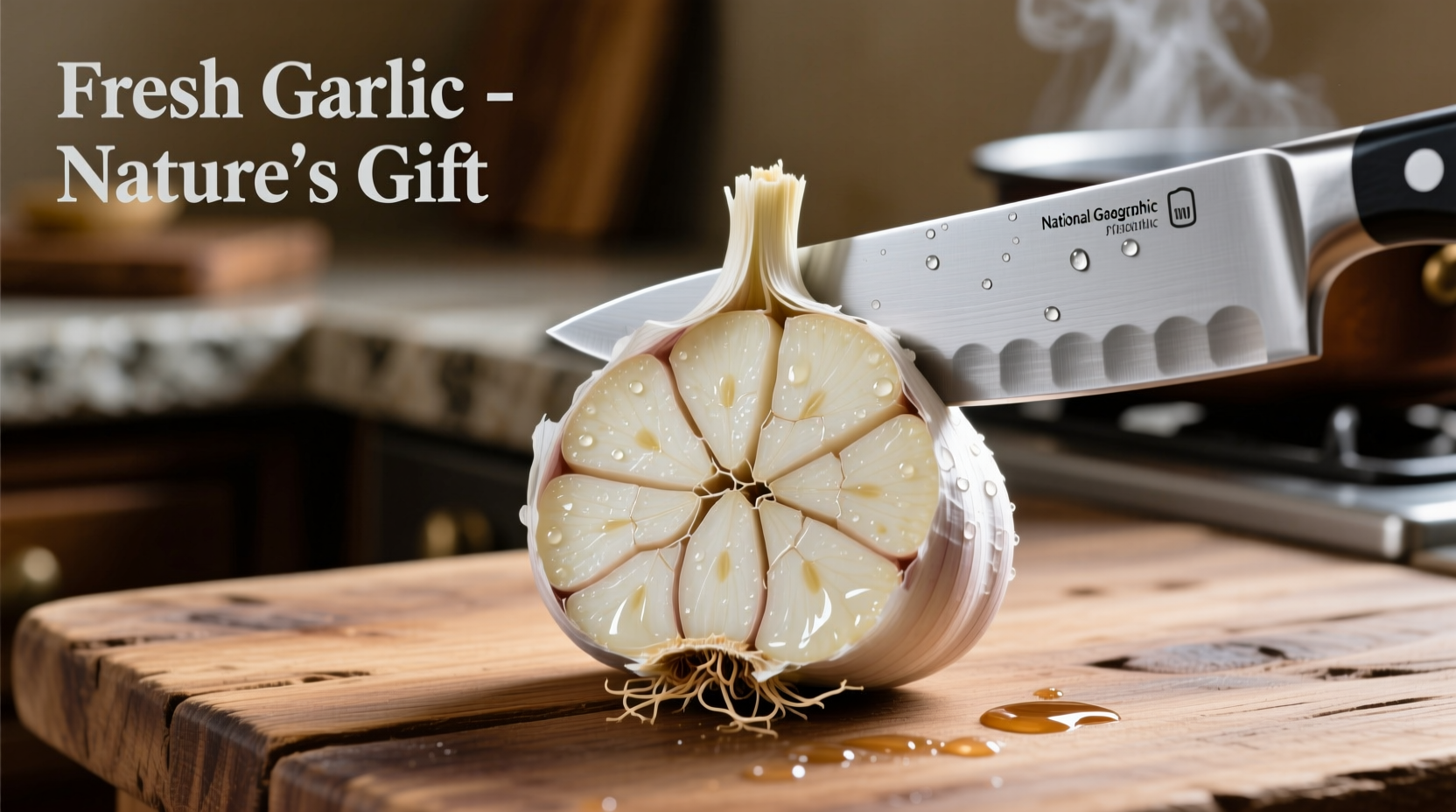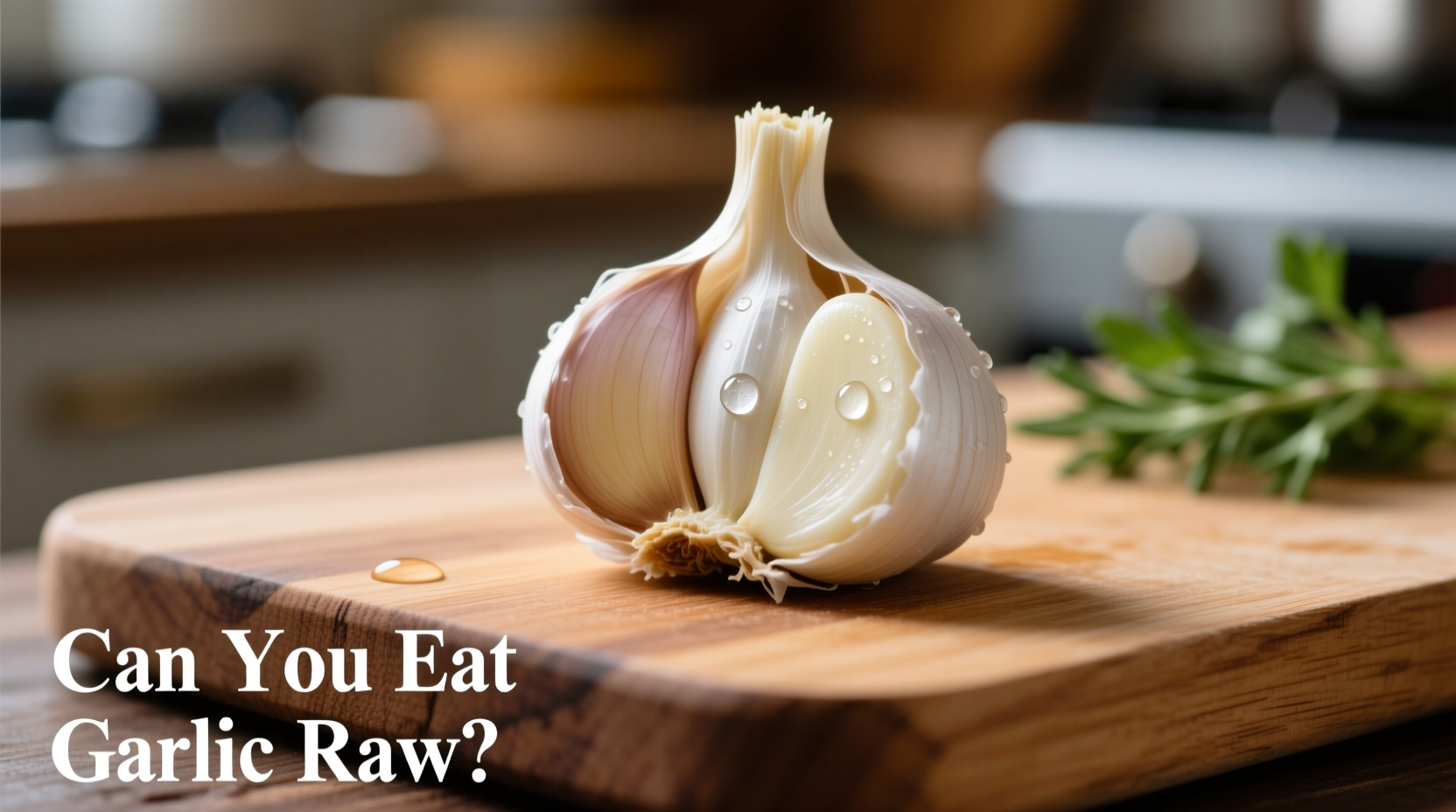Garlic sits at the fascinating intersection of culinary staple and medicinal plant. When you crush that pungent clove, you're not just preparing dinner—you're activating a biochemical reaction that transforms ordinary alliin into powerful allicin. This moment of transformation determines whether you'll harness garlic's maximum health potential or experience uncomfortable side effects.
The Biochemical Advantage of Raw Garlic
When you chop or crush raw garlic, you rupture cell walls containing the enzyme alliinase. This enzyme converts alliin into allicin—garlic's most studied bioactive compound. Here's what happens:
- Activation time: Allicin forms within 10-15 seconds after crushing
- Peak potency: Maximum concentration at 1-2 minutes
- Heat sensitivity: Cooking above 60°C (140°F) destroys alliinase
- Stability: Allicin breaks down within hours at room temperature
This biochemical window explains why raw garlic delivers different benefits than cooked. The National Center for Complementary and Integrative Health confirms that raw garlic preserves compounds lost during cooking, particularly those supporting cardiovascular health.

Science-Backed Benefits of Raw Garlic Consumption
Research published in the Journal of Nutrition demonstrates that regular raw garlic consumption provides measurable health advantages when consumed properly:
| Benefit | Scientific Evidence | Required Daily Intake |
|---|---|---|
| Blood pressure reduction | 4-6 mmHg systolic decrease (American Journal of Hypertension) | 1-2 cloves |
| Cholesterol management | 5-9% LDL reduction (Journal of Nutrition) | 2-3 cloves |
| Antimicrobial activity | Effective against bacteria, viruses, fungi (Phytotherapy Research) | As needed |
| Immune support | 21% reduction in cold incidence (Clinical Nutrition) | 1 clove daily |
Who Should Limit or Avoid Raw Garlic
While generally safe, raw garlic isn't appropriate for everyone. The FDA notes specific populations should exercise caution:
- Before surgery: Stop consumption 1-2 weeks pre-operation due to blood-thinning effects
- On blood thinners: Consult physician before regular consumption (interacts with warfarin)
- With GERD: May trigger heartburn in 30% of sufferers (American College of Gastroenterology)
- Pregnant women: Moderate consumption only—excessive amounts may stimulate uterine contractions
Individuals taking HIV medications should consult their healthcare provider, as garlic may reduce effectiveness of protease inhibitors according to NIH research.
Optimizing Raw Garlic Consumption
Maximize benefits while minimizing discomfort with these evidence-based techniques:
- The 10-minute rule: Crush garlic and wait 10 minutes before eating to maximize allicin formation
- Food pairing: Consume with honey, olive oil, or in salad dressing to reduce gastric irritation
- Dosage timing: Morning consumption shows better absorption in clinical studies
- Gradual introduction: Start with 1/4 clove daily, increasing over 2 weeks to build tolerance
For those experiencing digestive discomfort, try fermenting raw garlic in honey for 2-3 weeks. This traditional preparation method preserves beneficial compounds while reducing gastric irritation, as documented in NIH studies on fermented garlic.
Raw vs. Cooked Garlic: Making the Right Choice
Understanding when to use raw versus cooked garlic transforms your culinary and health outcomes:
- Choose raw garlic for: Immune support, antimicrobial benefits, maximum allicin content
- Choose cooked garlic for: Milder flavor, reduced digestive risk, sustained cardiovascular benefits
Cooking transforms garlic's compounds into different beneficial substances. While allicin degrades, research shows cooked garlic still provides stable sulfur compounds with antioxidant properties. For comprehensive health benefits, incorporate both raw and cooked garlic into your weekly diet.
Common Raw Garlic Misconceptions
Let's clarify some widespread misunderstandings about raw garlic consumption:
- Myth: More garlic equals better results
- Fact: Excessive consumption (over 5 cloves daily) increases side effects without additional benefits
- Myth: Raw garlic kills all harmful bacteria in your system
- Fact: While antimicrobial, it doesn't replace antibiotics for serious infections
- Myth: Garlic causes body odor in everyone who eats it
- Fact: Only 15% of people experience noticeable garlic odor (Journal of Agricultural and Food Chemistry)











 浙公网安备
33010002000092号
浙公网安备
33010002000092号 浙B2-20120091-4
浙B2-20120091-4